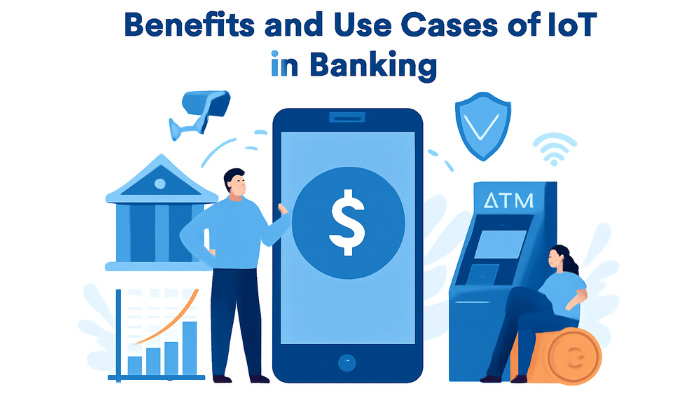Many businesses today face growing pressure from rising costs, complex workflows, and increasing customer expectations. Traditional methods struggle to keep pace with these challenges, leading to inefficiencies that hurt profitability and growth. This is where AI operational efficiency becomes a critical solution, having the potential to cut operating costs by more than 20%.
This blog explains what operational efficiency means and why it’s vital for your business success. You’ll learn how AI can address common operational challenges by automating tasks, predicting outcomes, and providing real-time insights.
Whether you’re a business leader or decision-maker, this guide will help you understand where AI can deliver the most value and how to start your AI journey with practical steps.
What is Operational Efficiency and Why Does It Matter?
Operational efficiency means achieving the highest possible output using the least amount of input such as time, cost, and effort. It involves maximizing productivity by eliminating waste, reducing delays, and optimizing how resources are used. In measurable terms, this translates into faster production cycles, lower operational expenses, fewer errors, and increased throughput.
1. Why Operational Efficiency Matters
Operational efficiency is critical for business success as it directly affects profitability and customer satisfaction by enabling faster delivery, higher quality, and cost-effective operations. Companies that don’t improve efficiency risk falling behind in innovation and losing their edge in responding to customer needs.
2. Common Barriers to Operational Efficiency
Despite its importance, many organizations face challenges that hinder efficiency:
- Siloed Data Systems: When data is scattered across different departments or software platforms like sales reports in one system and inventory data in other teams lack a clear, unified view of workflows. This fragmentation makes it hard to spot delays, forecast demand accurately, or align resources effectively.
- Manual Workflows: Routine activities such as manually entering purchase orders, updating spreadsheets, or scheduling shipments often consume significant time and invite errors. These repetitive processes not only slow down operations but also distract employees from higher-value strategic work.
- Lack of Predictive Insight: Without tools to analyze historical data and predict future needs, businesses often react too late to problems like unexpected equipment breakdowns, inventory shortages, or sudden changes in customer demand. This reactive approach leads to costly downtime, missed deadlines, and inefficient use of resources.
Understanding these common barriers helps reveal why adopting AI-driven solutions can transform operational efficiency by automating routine tasks, connecting data streams, and providing actionable forecasts.
How AI Boosts Operational Efficiency
Artificial intelligence offers several capabilities directly relevant to improving operations by automating tasks, providing predictive insights, and enhancing decision-making accuracy.
1. AI Powered Process Automation
One of the most impactful applications is AI-powered process automation. Repetitive, rule-based tasks such as invoice processing, data entry, and customer support queries can be handled by software robots known as Robotic Process Automation (RPA). Automating these workflows reduces manual errors, frees your workforce to focus on strategic activities, and speeds up overall cycle times.
2. Predictive Maintenance
Predictive maintenance is another critical use case. AI models analyze sensor data from equipment to identify patterns signaling potential failures before they happen. This reduces costly downtime and unplanned repairs by allowing maintenance to be scheduled precisely when needed, rather than on a fixed calendar basis.
3. Real-Time Decision Making
AI also improves real-time decision-making by analyzing vast amounts of operational data continuously. Machine learning algorithms forecast demand fluctuations, detect inefficiencies, and recommend resource adjustments. This predictive insight ensures you can allocate staff, inventory, and machinery optimally, preventing bottlenecks and minimizing waste.
4. Anomaly Detection
Additionally, AI-driven anomaly detection algorithms scan transactional data and system logs to spot irregularities that might indicate errors, fraud, or security threats. Early identification of such anomalies helps prevent financial losses and operational disruptions.
Technologies and frameworks commonly used to build these AI capabilities include machine learning models (like regression, classification, and clustering), natural language processing for customer interaction, and AI platforms that enable integration with existing systems. Combining these tools enables scalable, adaptable solutions tailored to your operational needs.
With a clear picture of AI’s core contributions, let’s explore the specific areas where AI makes the most significant impact on operational efficiency.
Key Areas Where AI Boosts Operational Efficiency
Artificial intelligence addresses critical operational bottlenecks by automating processes, improving forecasting accuracy, and optimizing resource use. Understanding these key areas helps you pinpoint where AI can deliver measurable business value.
1. Automated Workflow Management
Many businesses struggle with time-consuming, repetitive tasks that consume valuable human resources and slow overall productivity. AI-powered bots automate routine workflows such as data entry, scheduling, and report generation. This automation eliminates manual errors and accelerates task completion.
By handling these foundational activities, AI frees your employees to focus on strategic work that drives growth and innovation. For instance, automated invoice processing reduces accounting cycle times, while AI-based scheduling tools optimize meeting and shift planning without constant human oversight.
Example: An e-commerce company uses AI bots to automatically process thousands of invoices daily, cutting manual effort and reducing errors in billing cycles.
2. Demand Forecasting
Predicting demand accurately is fundamental to reducing operational waste and costs. AI applies advanced forecasting models that analyze historical sales, seasonality, market trends, and external factors like weather or economic shifts. These models inform inventory management, staffing levels, and supply procurement.
The outcome is a more balanced inventory that reduces overstocking and stockouts, saving costs on storage and lost sales. Businesses also avoid under- or over-allocating workforce resources, improving employee productivity and customer responsiveness.
Example: A retail chain uses AI to predict demand spikes for holiday seasons, enabling timely restocking and reducing lost sales from out-of-stock products.
3. Intelligent Quality Control
In manufacturing and service delivery, quality issues lead to rework, delays, and customer dissatisfaction. AI-driven quality control employs computer vision and sensor data analysis to detect defects and deviations early in the production cycle.
This immediate detection allows corrective action before defective products advance further, significantly cutting rework costs and delivery delays. AI systems also help identify root causes through pattern recognition, guiding process improvements to prevent future errors.
Example: An electronics manufacturer uses AI-powered cameras to detect faulty circuit boards on assembly lines, preventing defective products from reaching customers.
4. Customer Service Optimization
Customer experience is often hindered by slow response times and limited support availability. AI-powered chatbots and virtual assistants handle routine inquiries, FAQs, and issue tracking efficiently. These tools provide consistent, accurate responses around the clock.
By reducing the volume of repetitive queries routed to human agents, AI cuts support costs and shortens resolution times. The result is higher customer satisfaction and retention without proportionally increasing support staff.
Example: A telecom provider employs AI chatbots to answer common customer questions instantly, reducing wait times and freeing agents to handle complex issues.
5. Supply Chain and Logistics Optimization
Supply chains are vulnerable to disruptions and inefficiencies that increase operational costs. AI models analyze vast datasets to predict potential supply chain interruptions, such as supplier delays or transportation bottlenecks.
Example: A logistics company applies AI to reroute deliveries around traffic jams and bad weather, ensuring on-time shipments and lowering fuel costs.
6. Energy Management
AI optimizes energy consumption in facilities by monitoring usage patterns and adjusting systems automatically. For instance, manufacturing plants use AI to regulate lighting, heating, and cooling, cutting energy costs while maintaining safe working conditions.
Example: A factory uses AI to adjust HVAC and lighting based on real-time occupancy, cutting energy bills while maintaining comfortable working conditions.
7. Predictive Maintenance
Instead of fixing equipment after breakdowns, AI predicts when machines need maintenance based on sensor data. This reduces downtime and extends asset life. For example, factories use AI to schedule maintenance only when necessary, avoiding costly unplanned stops.
Example: A manufacturing plant employs AI sensors to predict when machines need servicing, preventing unexpected breakdowns and costly downtime.
8. Workforce Management
AI analyzes employee productivity, shift patterns, and demand forecasts to optimize staffing. Retail chains use AI tools to schedule the right number of staff during peak hours, reducing labor costs and improving service quality.
Example: A large retailer uses AI to forecast store foot traffic and schedule staff accordingly, reducing overstaffing during slow hours and ensuring coverage during peaks.
With these insights, your business can implement contingency plans proactively. AI also optimizes routing and dynamic scheduling, minimizing transit times and fuel consumption. These improvements reduce delays and expenses, supporting more reliable delivery and customer fulfillment.
With the benefits clear, let us discuss the use cases of AI for different industry operations.
How AI Is Revolutionizing Operational Efficiency in Key Sectors
Artificial intelligence is transforming operations across multiple industries, driving both efficiency and profitability. AI’s role extends beyond basic automation to predictive insights, optimized resource management, and enhanced decision-making. Below are several key examples of how AI is applied in various sectors, offering tangible benefits that align with AI operational efficiency.
1. Manufacturing
In the manufacturing sector, AI plays a crucial role in predictive maintenance, helping prevent costly downtime. AI models analyze sensor data from machines, predicting when a machine is likely to fail. This allows for proactive repairs, avoiding unexpected breakdowns and ensuring continuous production. Furthermore, AI-driven quality control uses computer vision to inspect products for defects at early stages, improving quality consistency and reducing rework costs.
Example: A global automobile manufacturer uses AI to analyze data from machines and predicts when parts need maintenance, reducing the risk of machine failures and improving operational uptime.
2. Retail
AI in retail operations significantly boosts inventory management by forecasting demand based on historical data, market trends, and external factors such as weather or economic shifts. AI models suggest optimal stock levels, reducing both overstocking and stockouts. AI also optimizes pricing strategies by analyzing competitive pricing, sales data, and market conditions, enabling businesses to adjust prices dynamically to remain competitive.
Example: A leading retailer uses AI to manage their inventory by predicting demand during holiday seasons and adjusting prices to remain competitive, reducing waste and maximizing profits.
3. Healthcare
In the healthcare sector, AI is revolutionizing patient care by predicting health conditions before they become critical. AI models analyze patient data to identify patterns and forecast potential medical issues, allowing for early interventions. Additionally, AI aids in administrative tasks, automating scheduling, billing, and patient communications to free up medical professionals for more direct care.
Example: A hospital uses AI to predict patient readmission risks and recommends preventive actions, which improves patient outcomes and reduces healthcare costs.
4. Finance
AI is widely used in financial services for fraud detection and risk assessment. Machine learning models analyze financial transactions in real-time, identifying suspicious activity and potential fraud, while AI-based predictive analytics help in assessing credit risk by analyzing historical data and customer behavior. This improves accuracy in lending decisions and safeguards financial institutions from losses.
Example: A major bank uses AI algorithms to identify fraudulent credit card transactions in real-time, alerting customers and reducing fraud-related losses.
5. Logistics and Supply Chain
AI is used extensively in supply chain optimization, forecasting demand, managing inventory, and predicting delivery routes. With real-time tracking and route optimization, AI can improve delivery speed, reduce fuel consumption, and enhance customer satisfaction. It also predicts potential disruptions in supply chains due to factors like weather conditions or supplier delays, allowing businesses to take preemptive action.
Example: A logistics company uses AI to optimize delivery routes and reduce fuel consumption during peak seasons, resulting in improved operational efficiency and reduced costs.
6. Customer Support
AI plays a vital role in improving customer service through chatbots and virtual assistants. These AI tools handle repetitive customer inquiries, provide 24/7 support, and reduce wait times for more complex issues. AI can also predict customer needs based on past interactions, offering personalized solutions and increasing overall customer satisfaction.
Example: A telecom company uses AI-driven chatbots to resolve billing issues and troubleshoot common technical problems instantly, significantly improving the customer experience.
7. Energy Management
AI is crucial in energy management for facilities, reducing energy consumption and improving sustainability efforts. AI models monitor energy usage and automatically adjust lighting, heating, and cooling systems based on occupancy patterns, weather forecasts, and time of day. This helps businesses lower energy costs and reduce their environmental impact.
Example: A manufacturing plant uses AI to adjust HVAC and lighting systems based on real-time data, saving energy while maintaining a comfortable environment for employees.
8. Education
In the education sector, AI helps personalize learning experiences, automate administrative tasks, and improve student engagement. AI-driven platforms can analyze student data, identifying areas where they need more support, and tailoring lessons accordingly. Additionally, chatbots and virtual assistants provide 24/7 support to students, answering questions about course material or deadlines, thereby easing administrative burdens.
Example: AI-powered platforms can recommend personalized learning paths based on a student’s progress, helping them focus on areas that need improvement, while automating grading processes for teachers.
9. Insurance
AI has revolutionized the insurance industry by automating claims processing, detecting fraud, and improving customer service. Machine learning algorithms can analyze large datasets to identify patterns, streamline underwriting, and predict claims. AI-powered chatbots enhance customer service by providing instant responses to queries, while fraud detection systems monitor for suspicious activity, reducing the risk of fraudulent claims.
Example: AI algorithms analyze customer behavior to recommend personalized insurance policies, improving customer satisfaction and retention rates, while also cutting down the time required to process claims.
10. Travel and Hospitality
AI in travel and hospitality helps improve customer experience and operational efficiency. AI-driven booking systems optimize pricing and availability, while chatbots assist customers with bookings and inquiries. In the hospitality industry, AI is used to personalize guest experiences by recommending activities and services based on individual preferences. Additionally, predictive analytics optimize flight and hotel bookings, while smart automation tools streamline operational processes like housekeeping or check-in/check-out.
Example: AI-powered recommendation engines suggest travel destinations and itineraries based on customers’ past preferences and search history, improving personalization and driving sales.
11. Agriculture
AI is transforming agriculture by improving crop yield predictions, automating irrigation, and detecting plant diseases early. Machine learning algorithms analyze climate and soil data to predict the best planting times and optimize crop management. AI-powered drones and sensors are working for precision agriculture, reducing resource waste and ensuring better crop health.
Example: AI-based drones can monitor crop health in real-time, detecting early signs of diseases, and allowing farmers to take corrective actions before the problem spreads, thus optimizing crop yield and minimizing pesticide use.
AI’s applications across various industries showcase its potential to improve operational efficiency by automating processes, enhancing decision-making, and providing valuable insights.
Now, let’s now address the common hurdles and critical considerations for successful AI implementation.
Challenges and Considerations in AI Implementation
Implementing AI to boost operational efficiency offers immense potential, but it comes with its own set of challenges. To truly benefit from AI operational efficiency, organizations must carefully plan their approach and address these hurdles early on. Awareness of these common issues ensures smoother adoption and lasting value.
1. Data Quality and Availability
AI models depend heavily on clean, comprehensive, and accurate data. Poor data quality or fragmented datasets can lead to faulty insights and misguided decisions. Ensuring data consistency and completeness across business units is crucial before AI deployment.
Solution: Invest in thorough data cleansing and establish clear governance protocols. Engage cross-functional teams to unify data sources and maintain real-time data quality monitoring.
2. Integration with Legacy Systems
You might be operating on a mix of legacy IT infrastructure and newer applications. AI tools must fit into this ecosystem without disrupting existing workflows or causing data silos. Integration challenges can delay AI benefits and increase costs.
Solution: Choose AI solutions designed with flexible APIs and modular architecture. Phased integration with continuous testing helps mitigate risks and preserves business continuity.
3. Change Management and Workforce Adaptation
Introducing AI alters workflows and roles, often causing resistance from employees who fear job displacement or uncertainty. Lack of proper training and communication can slow adoption and reduce AI’s impact on operational efficiency.
Solution: Develop a clear change management plan emphasizing reskilling and collaboration. Involve employees early to align AI use with human expertise, promoting a culture where AI supports people and not replaces them.
4. Ethical and Compliance Concerns
AI implementation involves handling sensitive data and making automated decisions that may affect stakeholders. Issues like algorithmic bias, privacy violations, and regulatory compliance must be proactively addressed to avoid legal risks and reputational damage.
Solution: Implement transparent AI practices, conduct regular audits for bias and fairness, and make sure to adhere to applicable data privacy regulations like GDPR or HIPAA.
5. Scalability and ROI Measurement
AI projects can stall if scalability is overlooked or if outcomes are not clearly measured. Without clear KPIs tied to operational efficiency, it’s difficult to justify ongoing investment or optimize AI deployments.
Solution: Set realistic, measurable goals aligned with business priorities from the start. Use continuous performance tracking and feedback loops to refine AI applications and demonstrate tangible ROI.
With these challenges in mind, organizations can better prepare for successful AI adoption that genuinely improves operational efficiency. Now, let’s explore how Codewave’s tailored AI solutions can guide your business through this transformation and deliver tangible results.
How Codewave Supports Your AI-Driven Operational Efficiency Journey
Achieving measurable improvements in operational efficiency requires AI solutions that are precisely aligned with your business challenges. Codewave applies a design-thinking-led approach to understand your unique operational pain points before crafting tailored AI systems that deliver real-world impact.
By focusing on your specific workflows, resource constraints, and strategic goals, Codewave develops AI applications that optimize processes and generate actionable insights. This personalized approach avoids one-size-fits-all solutions and ensures AI investments translate into clear outcomes such as cost reduction, improved throughput, and faster decision-making.
Key services from Codewave that support your AI operational efficiency goals include:
- AI/ML Development: Building custom machine learning models that predict demand fluctuations, automate anomaly detection, and forecast maintenance needs. These models integrate smoothly with your existing infrastructure to provide continuous, data-driven operational insights.
- Process Automation: Automating repetitive and error-prone tasks, from invoice processing to supply chain event handling, which cuts manual workloads and accelerates cycle times.
- Data Analytics Development: Delivering advanced analytics platforms that transform raw data into visualized trends and predictive dashboards. This empowers your teams to make informed operational decisions based on real-time metrics.
- Automation Testing: Ensuring your AI-driven systems perform reliably across scenarios with comprehensive automated testing, minimizing downtime and maintaining quality.
For organizations eager to validate AI’s potential rapidly, Codewave offers AI Prototype Development services. This fast-track approach creates functional AI prototypes that demonstrate feasibility and value, enabling quick stakeholder buy-in and risk reduction before full-scale deployment.
If you’re facing operational inefficiencies that impede growth or profitability, consulting with Codewave’s AI experts can provide a clear path forward. Together, you can develop a tailored AI strategy that targets your most critical challenges and unlocks measurable improvements in AI operational efficiency.
Codewave is a UX first design thinking & digital transformation services company, designing & engineering innovative mobile apps, cloud, & edge solutions.







